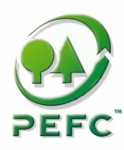
 Gland, Switzerland – WWF updated its evaluation of credible forest certification in Europe. This follows the completion of a series of three studies WWF in Europe has been involved in to gain insights into how the two forest certification systems, FSC and PEFC, perform and deliver against key elements WWF considers important for a system's credibility.
Gland, Switzerland – WWF updated its evaluation of credible forest certification in Europe. This follows the completion of a series of three studies WWF in Europe has been involved in to gain insights into how the two forest certification systems, FSC and PEFC, perform and deliver against key elements WWF considers important for a system's credibility. The three key elements on which WWF tested the performance of FSC and PEFC were:
– whether the scheme drives significant improvements in forest management on the ground;
– whether a scheme design meets as a minimum WWF's core values on meaningful and equitable participation of all major stakeholder groups, reliable and independent assessment, certification decisions free of conflicts of interest, transparency in decision making and reporting; and
– whether the system delivers consistency across countries.
The following three studies were used for gaining insights on the abovementioned key elements:
1. The WWF/World Bank Alliance trial of the Questionnaire for Assessing the Comprehensiveness of Certification Schemes/Systems (QACC) in 12 European countries;
2. The parallel certification test conducted by UPM in Europe and Canada; and
3. An analysis of Corrective Action Requests (CAR) of FSC and PEFC across six countries in Europe.
Findings from these studies have for the first time highlighted key differences and similarities between individual national schemes. While they indicated improvements in both FSC and PEFC throughout Europe over the last five years, these studies also confirmed that significant differences still exist between the two
These studies clearly demonstrate that FSC meets the abovementioned three key elements of fundamental importance to WWF. PEFC demonstrated inconsistency, was more difficult to measure due to lack of transparency, and, in most cases, was inferior to FSC. WWF can therefore only recommend FSC to consumers, forest owners, governments, companies, financial institutions and other concerned stakeholders as delivering on credible forest certification.
“The QACC findings, the CAR analysis and the insights from the UPM field test clearly indicate the difference in quality between the schemes and the systems on values of fundamental importance to WWF. FSC is the system that best meets WWF´s criteria for credible certification,” said Duncan Pollard, Head of the WWF European Forest Programme.
“Despite positive improvements within several certification schemes in the last few years, the results of the tests show that the different PEFC schemes are highly inconsistent in quality and comprehensiveness and that PEFC as a system cannot guarantee well-managed forests. This makes it impossible for WWF to recommend PEFC to forest managers, buyers and consumers, even though individual PEFC national schemes like the UK and Sweden perform better than other PEFC national schemes,” added Per Rosenberg, Director of the WWF Global Forest and Trade Network.
While making these conclusions, WWF also acknowledges that both FSC and PEFC need improvements. FSC needs to improve notably in its approach to interim standards. PEFC needs to improve across a range of issues, in particular on transparency of decision-making and reporting, balanced and equitable stakeholder participation, reliable assessment, and removal of conflicts of interests.
It specifically needs to improve on its ability to demonstrate improvements on the ground. It also needs to develop a consistent approach across countries. While some national PEFC schemes were better in performance than other PEFC national schemes, the common use of the PEFC logo does not allow buyers to differentiate between them.
In those countries where there is still conflict between schemes WWF will support, as appropriate, the preparation of a National Standard which can be recognised by both FSC and PEFC.
“We will use these insights from the European studies to revise WWF's forest certification policy,” said Nils Hager, WWF International's Manager for forest certification issues.



